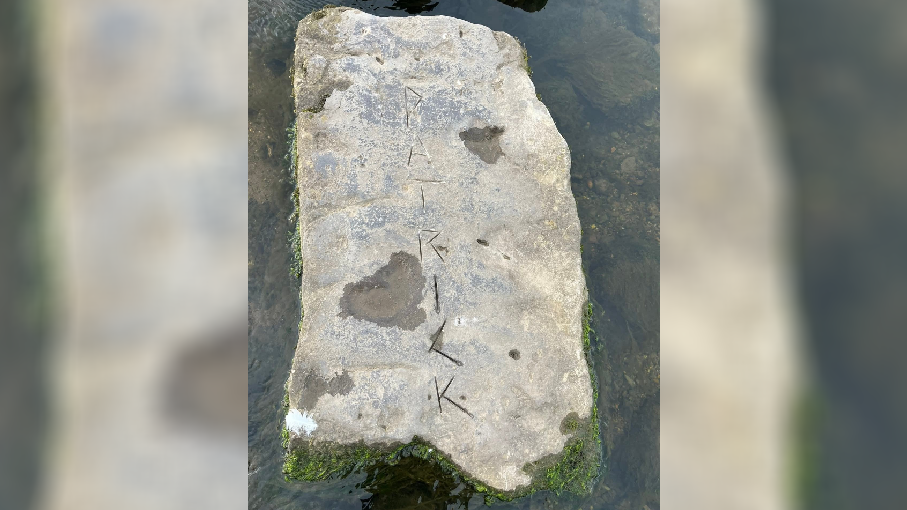How human hair helped to save a crumbling medieval church
Tradesman Louis Cartwright says he put his heart, soul, and his hair into the project
- Published
A medieval church has been rescued from ruin in a "race against the clock" renovation, with one tradesman even cutting off his own hair to keep traditional building methods alive during the process.
St James's Church in Llangua, Monmouthshire, dates back as far as 1150 but in recent years the roof had neared the point of collapse.
Now, funded by donations, the church has been painstakingly restored by a team of builders who used traditional skills in carpentry, plastering and roofing.
"We joked that the cobwebs were holding the roof up - we don't know how it was still up," said Rachel Morley, director of the Friends of Friendless Churches charity, which organised the renovation.
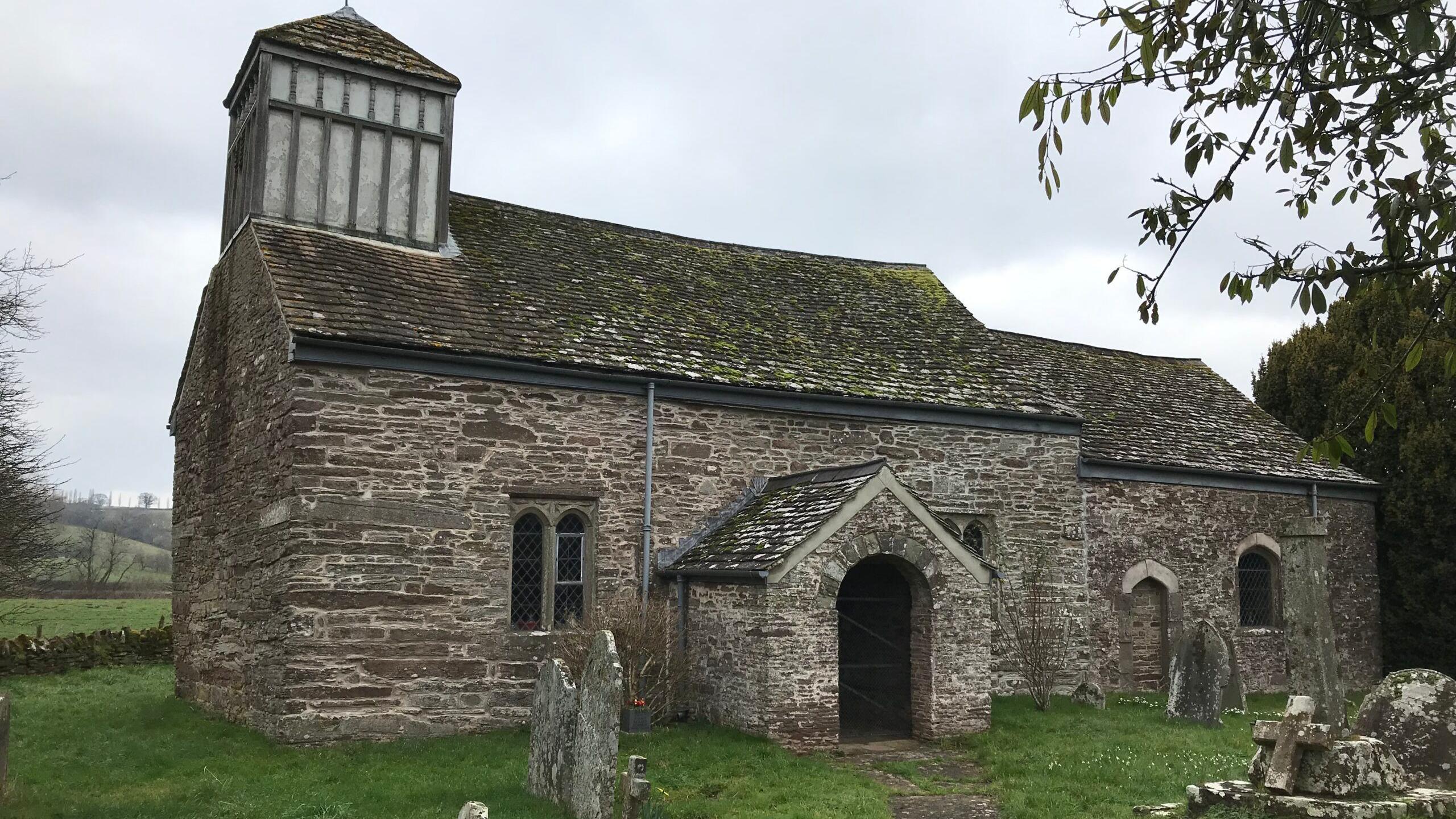
The church's stone tiles were weighing down the roof and they were also covered in a rare moss which had to be protected during the work
The church, which lies on the Wales-England border, was declared redundant in 2020, meaning it was no longer used for worship.
Originally a small stone monastic cell, the building was extended when it became a parish church in the early 15th Century but a gradual decline in church congregations meant it fell into disrepair.
"It really was a race against the clock," said Ms Morley, whose charity got involved five years ago.
"If that roof had come down those 15th Century timbers would have been lost."
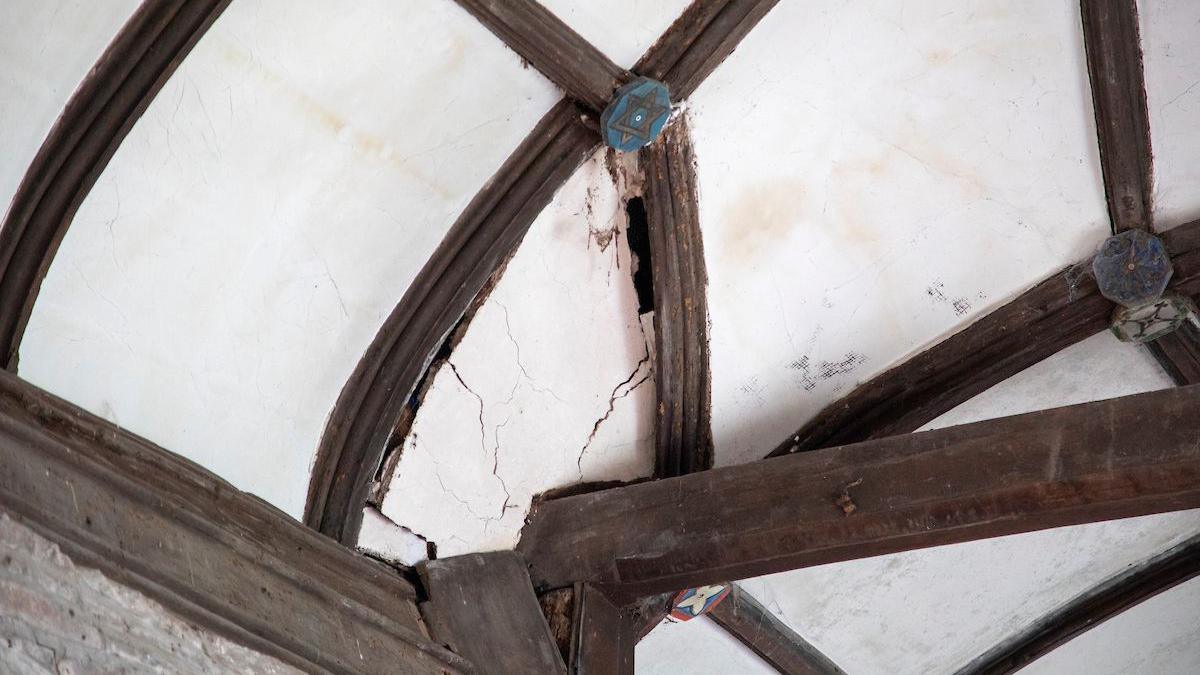
The roof was at the point of collapse before the work started
From the inside today, the ceiling is curved - known as a wagon or barrel vault roof - but the weight of the stone tiles meant over time it had sagged into a much flatter shape.
"Without exaggeration, it was at the point of collapse" said Tom Jones, director of Jones and Fraser contractors, which worked on the project between April 2024 and May 2025.
"The whole roof had to be lifted off and reshaped," he added, because many of the frame timbers were cracked or decayed.
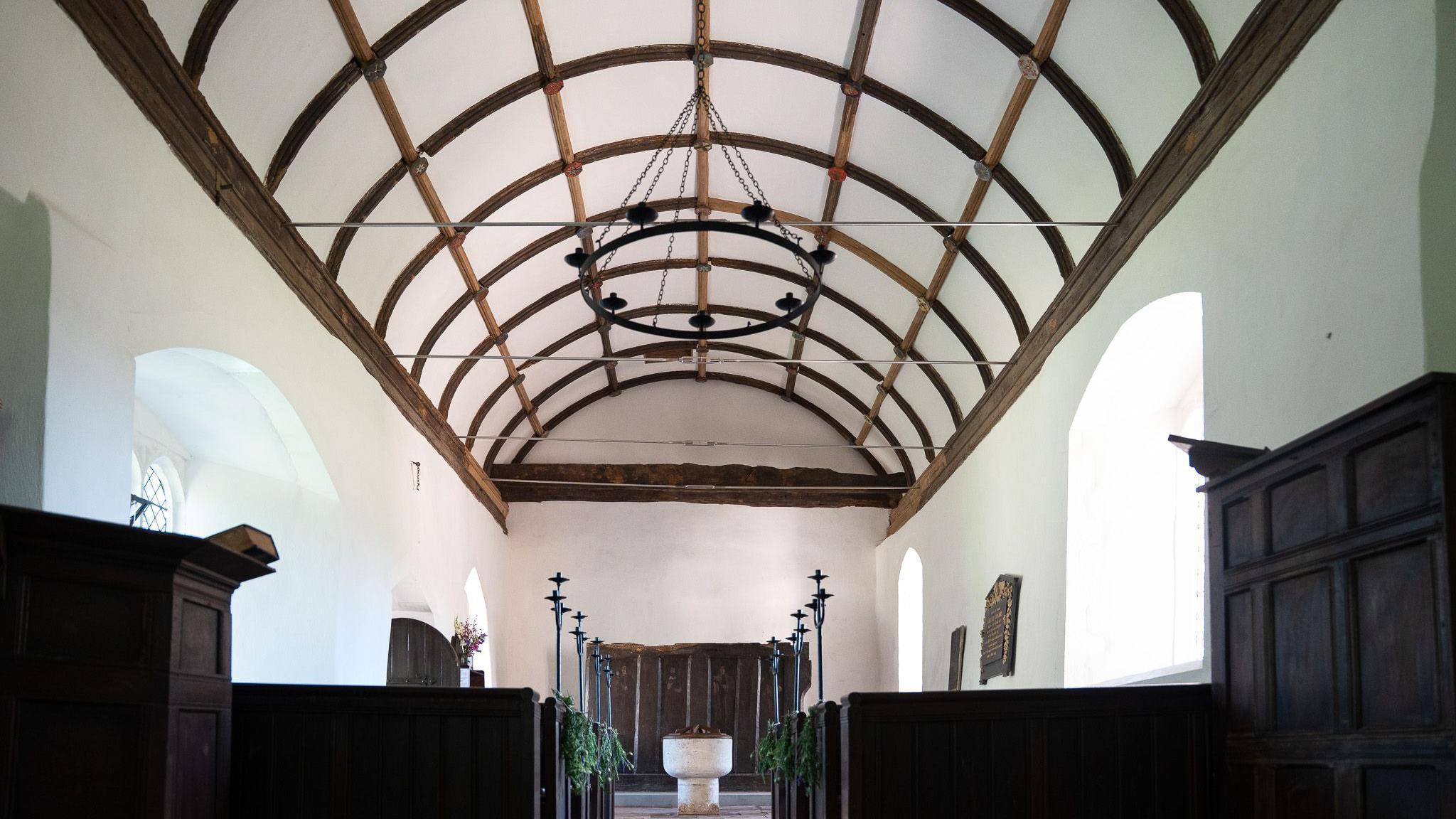
The wagon roof of St James's is now fully restored
The work followed three years of fundraising with the majority of the money coming from the National Heritage Memorial Fund, a smaller grant from the Garfield Weston Foundation, and around £170,000 in public donations.
The job was "exciting" for the building team as various specialist crafts came together but the key was for all work to be" period correct", meaning using traditional techniques to carry out the work.
"We are repairing here - it's not our creation," said Mr Jones.
'I am literally part of this building'
One of the team who took his job particularly seriously was restoration heritage plasterer Louis Cartwright.
According to the traditional plastering method, lime putty should be mixed with sand and animal hair - but finding ethically sourced hair was a problem.
"So to get things started, I actually cut off some of my own hair," explained the 30 year-old.
"It sort of started off as a joke but I think we were just having fun one day. My hair was really long back then and I thought, 'yeah it's about time'," he added.
"It just feels amazing that not only I put my heart and soul into the work but I am literally part of this building."
The plasterer was eventually able to finish the job using ethically sourced goat and horse hair, as well as a donation of a dog's moulted hair, according to the restoration team.
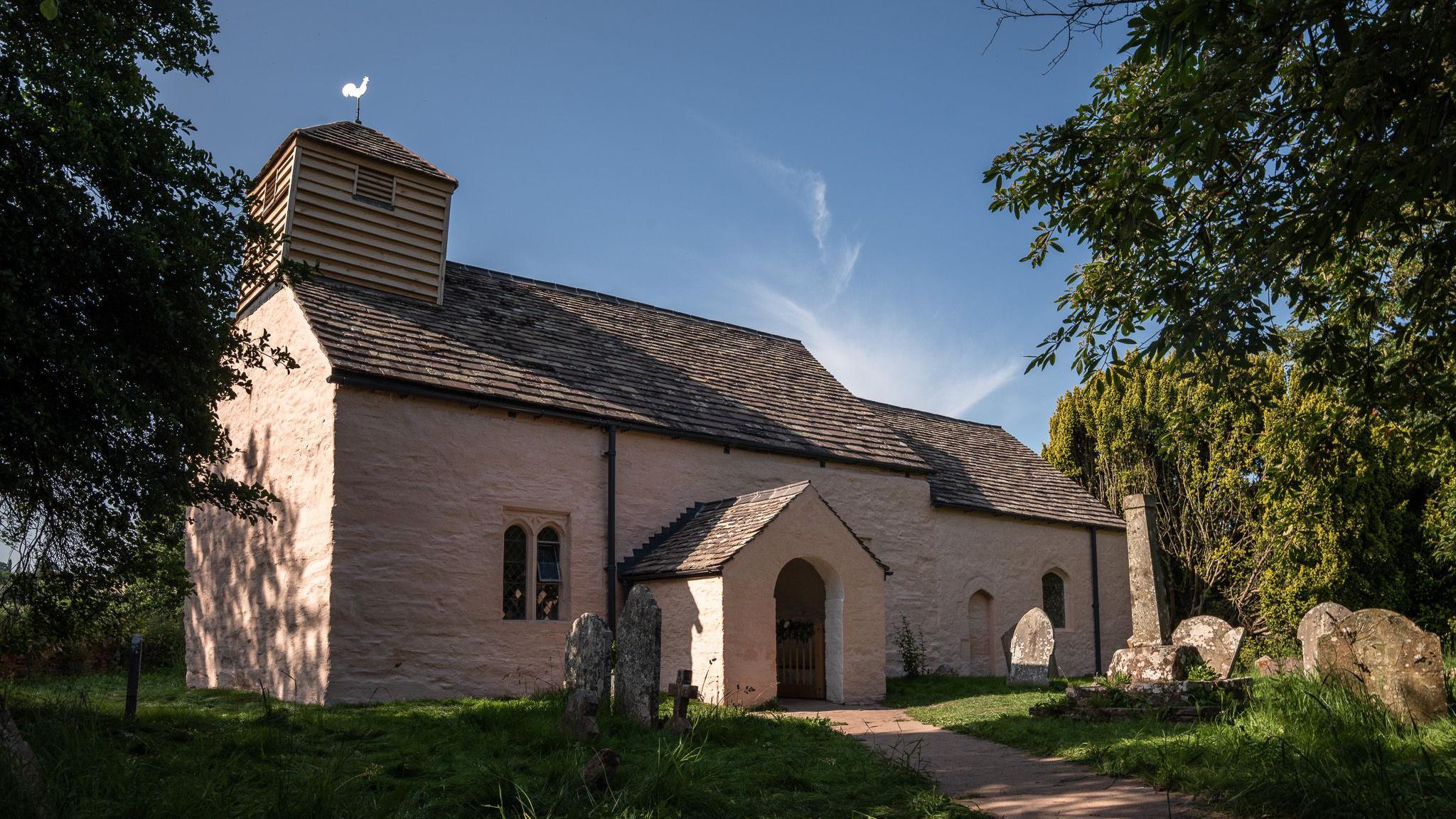
The church has been painted a pale pink intended to pick up tones of the coral colour in the local clay soil
The restoration is now complete. Outside, the render has been painted pink which glows in the September sun, and inside the roof is again the main focus of the small but impressive building.
"These buildings are so massively culturally important and they belong to the nation," said Ms Morley.
"The craft that went into them - the skill and the material. It's such a wonderful rich legacy."
The church is now open to visitors with the possibly that it could be used as a community centre or even as a place or worship again in the future.
Drone footage courtesy of Andy Marshall
Related stories
- Published17 August
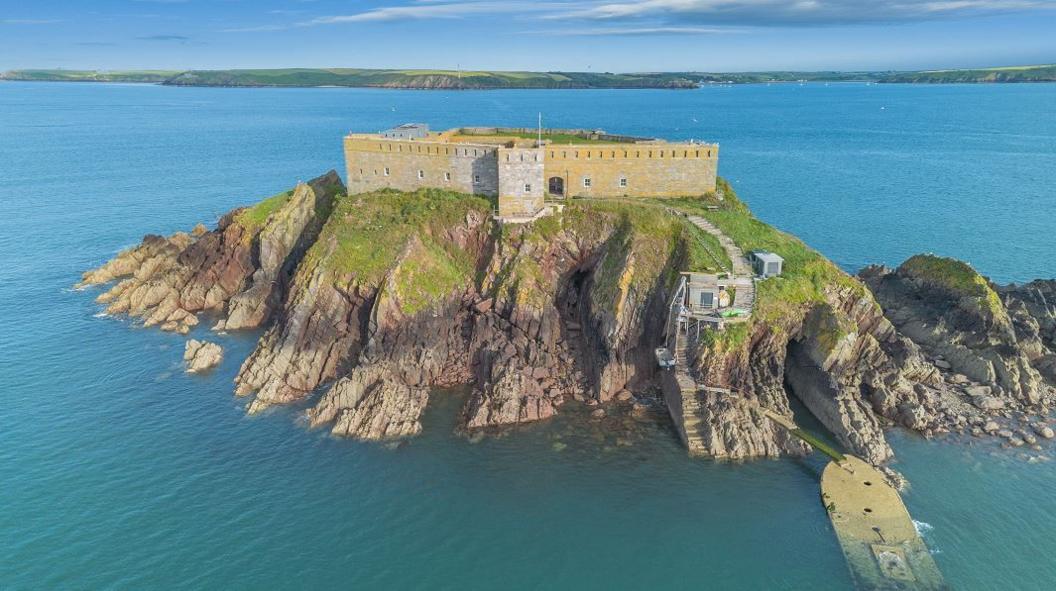
- Published17 August
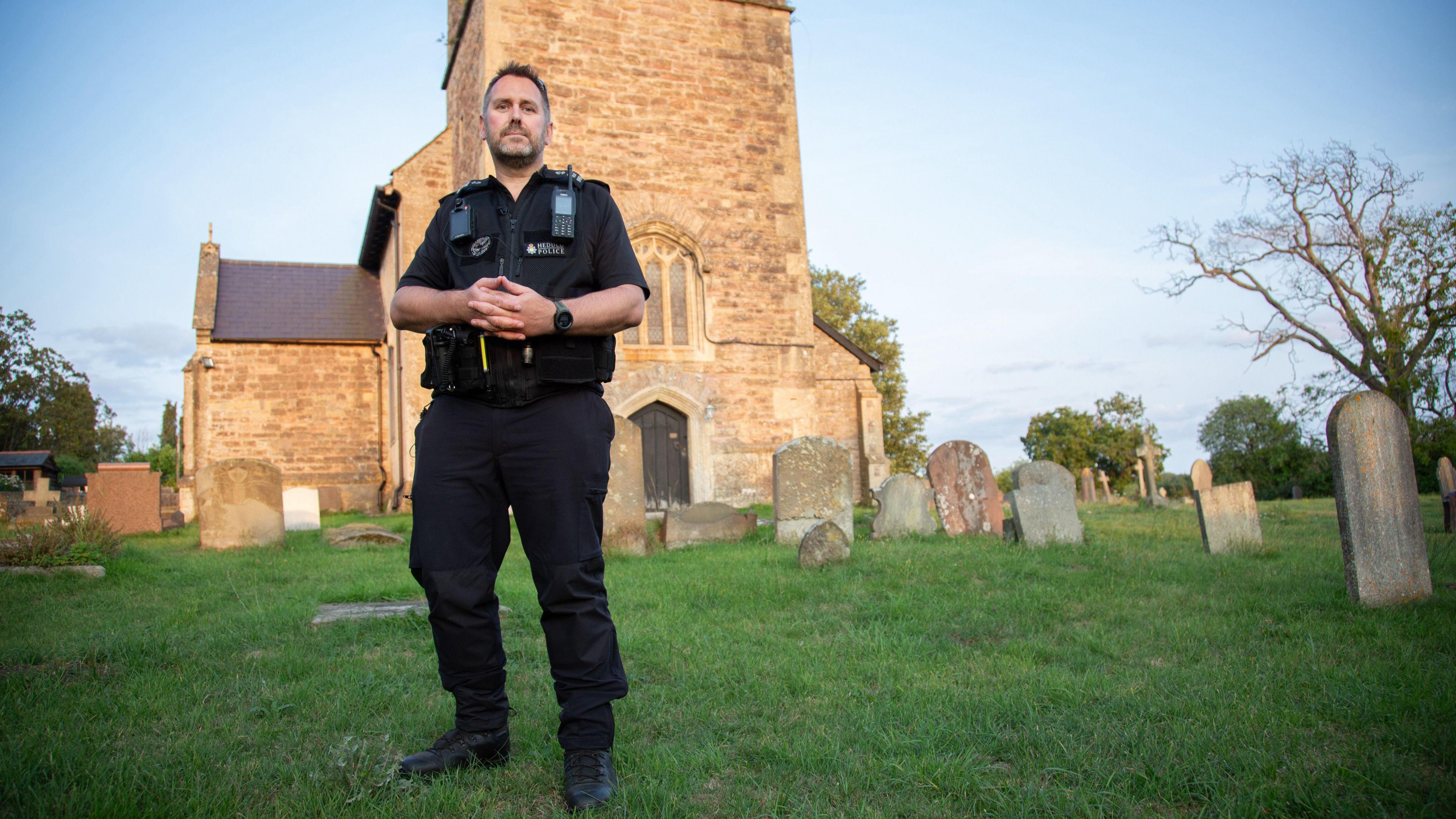
- Published8 September
